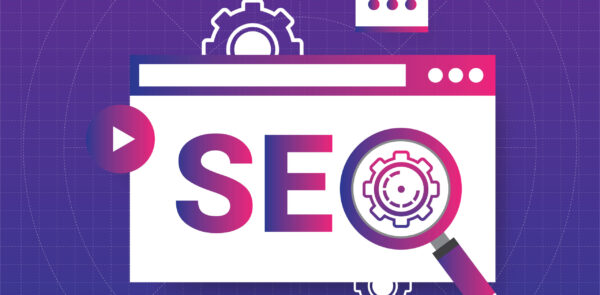
Jump to a section:
Agentic AI represents a significant evolution beyond traditional rule-based automation in digital marketing. Unlike simple if-then logic, agentic workflows can perceive, decide, and act autonomously toward specific goals while adapting to changing conditions in real time. However, understanding marketing automation limits remains crucial as organizations rush to implement these systems. While agentic AI workflows offer unprecedented efficiency in SEO and PPC management, they also introduce new risks that require careful consideration and strategic implementation.
Agentic AI workflows have emerged as a top priority for marketing organizations, with 36% of respondents in the 2025 Global AI Survey identifying them as key value generators. This shift from traditional automation reflects growing sophistication in AI capabilities and increasing pressure on marketing teams to scale operations while maintaining quality and personalization.
The evolution from rule-based to agentic systems represents a fundamental change in how marketing automation operates. Traditional systems follow rigid if-then logic, while agentic workflows can adapt strategies, learn from outcomes, and make contextual decisions without constant human intervention. However, this sophistication brings new challenges around control, transparency, and exception handling that marketing leaders must address proactively.
Understanding Agentic AI Workflows
Agentic AI workflows differ fundamentally from traditional marketing automation by incorporating goal-oriented decision-making and adaptive learning capabilities. These systems can perceive environmental changes, evaluate multiple options, and adjust strategies autonomously while working toward defined objectives. In marketing contexts, this means workflows that can optimize campaigns, adjust bidding strategies, and personalize content based on real-time performance data and user behavior patterns.
The power of agentic workflows lies in their ability to operate across multiple dimensions simultaneously. Rather than managing single tasks like keyword bidding or content scheduling, agentic systems can orchestrate entire campaigns, balancing performance metrics, budget constraints, and strategic objectives dynamically. They can also learn from outcomes and improve decision-making over time, creating compounding value that traditional automation cannot match.
- Goal-Oriented Operation: Systems work toward defined objectives rather than simply executing predetermined tasks.
- Contextual Decision Making: Workflows adapt strategies based on real-time data and changing market conditions.
- Cross-Channel Orchestration: Integrated management of multiple marketing channels and touchpoints.
- Continuous Learning: Systems improve performance through experience and outcome analysis.
| Automation Type | Decision Logic | Adaptability | Learning Capability |
|---|---|---|---|
| Traditional Rules | If-then statements | Fixed responses | None |
| Smart Automation | Algorithm-based | Limited optimization | Pattern recognition |
| Agentic AI | Goal-oriented reasoning | Dynamic adaptation | Continuous improvement |
“Agentic workflows represent a fundamental shift from executing tasks to achieving outcomes. While traditional automation handles repetitive processes efficiently, agentic systems can navigate complexity, adapt to changing conditions, and optimize toward business goals. However, this sophistication requires new approaches to governance, monitoring, and exception handling that many organizations are still learning to implement effectively.” – LinchpinSEO Strategy Team
SEO Automation: Where It Works and Where It Fails
SEO automation has proven highly effective for data-intensive tasks like keyword research, technical audits, and performance monitoring. Agentic workflows excel at analyzing massive datasets, identifying optimization opportunities, and implementing technical improvements at scale. They can track algorithm changes, monitor competitor strategies, and adjust content strategies based on performance patterns that human analysts might miss or process too slowly.
However, SEO automation faces significant limitations in areas requiring creativity, strategic thinking, and nuanced understanding of user intent. Automated content generation often produces generic, formulaic output that lacks the depth and originality needed for competitive advantage. More critically, over-reliance on automation can lead to strategic blind spots where systems optimize for metrics without understanding broader business context or user experience implications.
- Technical Optimization: Automated audits, site speed monitoring, and error detection work well with minimal human oversight.
- Keyword Research: Data analysis and opportunity identification benefit from automated processing of large datasets.
- Content Strategy Gaps: Automated content lacks originality, creativity, and nuanced understanding of audience needs.
- Algorithm Adaptation: Systems struggle to interpret the intent behind algorithm changes beyond statistical patterns.
| SEO Function | Automation Effectiveness | Risk Level | Human Oversight Needed |
|---|---|---|---|
| Technical audits | High | Low | Minimal |
| Keyword research | High | Medium | Strategic validation |
| Content creation | Medium | High | Editorial oversight |
| Link building | Low | Very High | Complete human control |
PPC Automation Risks and Failure Points
PPC automation has evolved rapidly, but PPC automation risks remain significant when systems operate without proper guardrails and monitoring. Rule-based bidding automation frequently fails due to fixed lookback windows that don’t account for recent bid changes, rigid percentage-based adjustments that ignore market dynamics, and over-optimization that sacrifices account-level performance for keyword-level metrics.
The most dangerous PPC automation failures occur when systems make rapid, compounding adjustments based on incomplete data or flawed logic. For example, automated rules that continuously reduce bids based on historical cost-per-acquisition data can drive bids so low that campaigns lose all competitive positioning, even when the original CPA targets were achievable at higher bid levels.
- Fixed Lookback Windows: Historical data doesn’t reflect current bid performance, leading to continued incorrect adjustments.
- Rigid Percentage Rules: Simple increase/decrease logic ignores market context and competitive positioning.
- Over-Optimization: Keyword-level optimization can harm overall account performance and strategic objectives.
- Context Loss: Automated systems often miss seasonal patterns, competitive changes, or campaign interactions.
“The biggest PPC automation failures happen when systems optimize individual metrics without understanding business context. A keyword with high cost-per-acquisition might actually be profitable when you consider customer lifetime value, or it might be driving valuable brand awareness that supports other channels. Agentic systems need sophisticated goal hierarchies and business logic to avoid these strategic blind spots.” – LinchpinSEO Strategy Team
Exception Handling and Quality Control
Exception handling becomes critical as agentic workflows operate with greater autonomy and complexity. Unlike simple automation that follows predetermined paths, agentic systems encounter unexpected scenarios that require sophisticated error handling and escalation procedures. Marketing organizations must implement comprehensive monitoring systems that can detect when automated decisions deviate from expected patterns or business logic.
Effective exception handling requires both technical and business logic layers. Technical exceptions include system failures, data inconsistencies, or integration problems that prevent normal operation. Business exceptions occur when automated decisions violate strategic guidelines, exceed performance thresholds, or produce outcomes inconsistent with brand values or customer experience standards.
- Technical Exception Detection: Monitor system failures, data quality issues, and integration problems.
- Business Logic Validation: Verify that automated decisions align with strategic objectives and brand guidelines.
- Performance Threshold Alerts: Establish guardrails that trigger human review when metrics exceed acceptable ranges.
- Escalation Procedures: Define clear processes for human intervention when exceptions occur.
| Exception Type | Detection Method | Response Protocol | Recovery Time |
|---|---|---|---|
| System failure | Automated monitoring | Immediate alert, manual fallback | Minutes |
| Performance anomaly | Statistical analysis | Pause automation, human review | Hours |
| Budget overspend | Real-time tracking | Automatic spending caps | Immediate |
| Brand guideline violation | Content review systems | Content quarantine, approval queue | Days |
Building Hybrid Human-AI Workflows
The most effective approach to agentic marketing workflows combines automation efficiency with human strategic oversight. This hybrid model positions automation as an intelligent assistant that handles data processing, routine optimization, and tactical execution while reserving strategic decisions, creative development, and exception handling for human experts.
Successful hybrid workflows require clear role definitions, robust feedback mechanisms, and continuous calibration between human judgment and automated execution. Marketing teams must develop new competencies in AI system management, performance monitoring, and strategic direction-setting while allowing agentic systems to handle the operational complexity of modern digital marketing.
- Strategic Human Control: Humans set objectives, define constraints, and make high-level strategic decisions.
- Automated Tactical Execution: AI systems handle data processing, optimization, and routine campaign management.
- Collaborative Exception Handling: Automated detection combined with human judgment for complex situations.
- Continuous Learning Loops: Human feedback improves AI decision-making while AI insights inform human strategy.
Data Table: Key Trends and Strategic Action Items
| Key Trend | Strategic Action Item |
|---|---|
| 36% identify agentic workflows as top value generators | Invest in agentic capabilities while building proper governance frameworks |
| Rule-based automation increasingly inadequate | Upgrade to goal-oriented systems with adaptive learning capabilities |
| Rising complexity in exception scenarios | Implement comprehensive monitoring and escalation procedures |
| Human-AI collaboration becoming critical | Develop hybrid workflows with clear role definitions and feedback loops |
| Over-automation risks in creative and strategic areas | Maintain human control over brand voice, strategy, and customer experience |
Conclusion
Agentic AI workflows represent a significant advancement in marketing automation capabilities, offering unprecedented ability to optimize campaigns, adapt to changing conditions, and scale operations efficiently. However, understanding marketing automation limits remains crucial for successful implementation. The most effective approach combines agentic AI efficiency with human strategic oversight, creating hybrid systems that deliver both operational excellence and strategic alignment.
The Linchpin team helps organizations design and implement agentic workflows that balance automation efficiency with strategic control. We work with marketing teams to identify optimal automation opportunities, establish proper exception handling procedures, and create hybrid human-AI systems that deliver sustainable competitive advantage while maintaining brand integrity and customer experience quality.
If you need help with agentic AI workflows and marketing automation strategy, contact the Linchpin team today. We can help you navigate the opportunities and risks of advanced automation while building systems that scale efficiently without sacrificing strategic control or brand quality.


